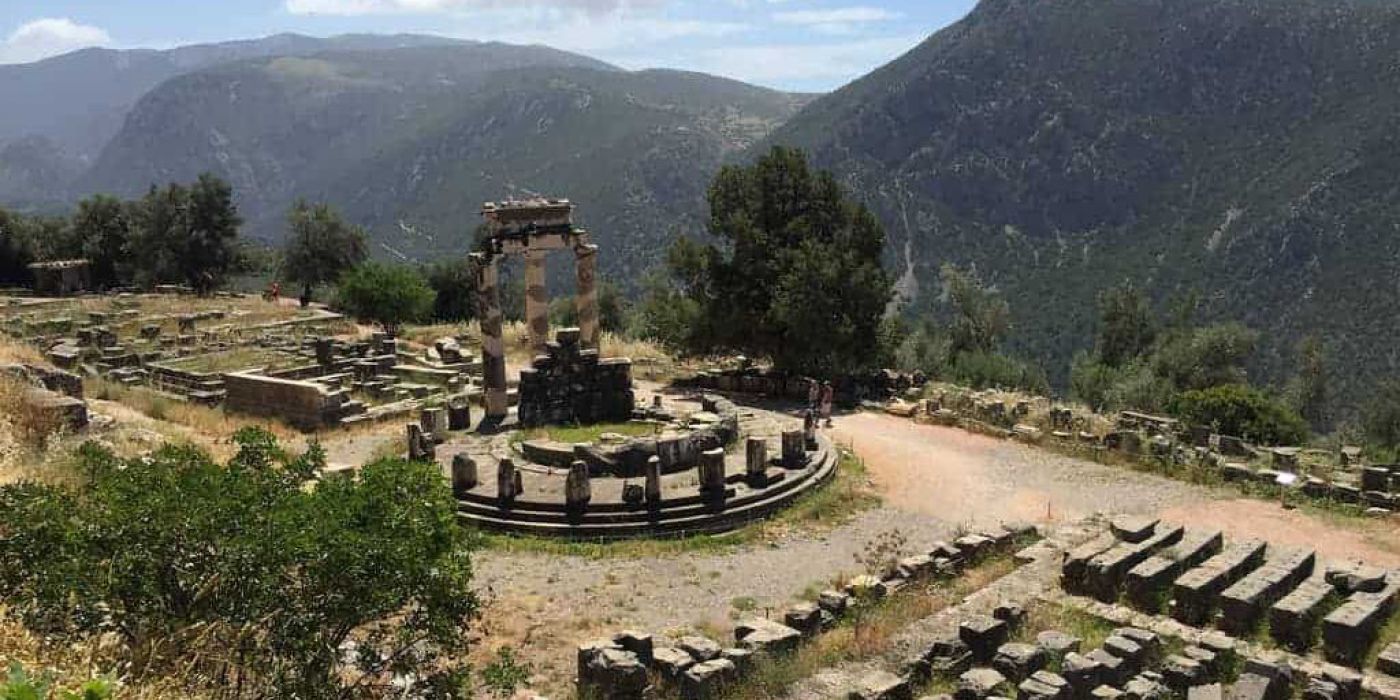
The Pythia, the priestess of the Temple of Apollo in Delphi during antiquity, is said to have delivered her oracles in a trance-like state, the possible causes of which have been the subject of much speculation over the centuries and, more lately, of scientific research.
The latest work in this direction has been an investigation of the hypothesis that gases emanating from beneath the Adyton, a chamber beneath the temple where the priestess gave her prophecies, could have been largely responsible for her altered state. «A close relationship has been found between the Oracle and the geological formation of the site,» said Giorgos Papatheodorou, an associate professor of geology at Patras University. The Oracle of Delphi was the most important in the ancient world. Its prophecies, which have gone down in history and mythology, were based on the utterings of the Pythia as interpreted by the oracle priests, who reshaped her utterances into verse. Ancient texts relate that the Pythia, sitting on a three-legged stool, chewed laurel leaves while inhaling the vapors that rose from burning herbs. According to modern research, the Pythia’s state was affected by gases rising through the fissures in the ground of the tiny subterranean Adyton. «We have traced methane, ethylene and carbon dioxide in the area where the Adyton is thought to have been situated. The presence of these gases reduces the amount of oxygen in the atmosphere, causing a slight hypnotic state that could result in a frenzied or ecstatic state,» said Papatheodorou. The research was carried out by an Italian-Greek team of of scientists over the summers of 2004 and 2005 and included Giuseppe Etiope and Paolo Favali of Italy’s National Institute of Geophysics and Vulcanology, as well as Papatheodorou and his colleagues at Patras University. The results were published in Geology magazine and reproduced on many science websites. Debate over the link between the Pythia’s state and the emission of gases was given fresh impetus in 2000 when a distinguished American geologist, Jelle Zeilinga De Boer, put forward the view that the temple was built over the intersection of two fault lines from which ethylene gases emanated. Ethylene, a sweet-smelling gas, has a toxic effect on the body’s nervous system and could have caused the Pythia’s altered state. Plutarch himself (who served as a priest at the temple in Delphi), referred to a sweet smell pervading the site during the prophecies. «Our research did not confirm the ethylene hypothesis. We found no trace of ethylene in our measurements around the Temple of Apollo. Moreover, ethylene is mainly produced from bacteria, which is unlikely to have emanated from the limestone layers underneath the oracle site,» he said. But as geological changes could have occurred since antiquity, Papatheodorou said that nothing could be ruled out. «We made a scientific hypothesis that is a satisfactory scenario and should be judged as such. What is important is that the site of the oracle, particularly the Adyton, were chosen due to their geological substructure. The Oracle of Delphi is situated above a geological fault from which the gases could have emanated. The next step is to test for the presence of aromatic hydrocarbons which could account for the sweet smell referred to by Plutarch,» he added. It appears that the most famous oracle in the world still has a few hidden secrets.
Latest Posts

"Why are the Posidonia meadows so valuable for our seas?": Article in LIFO

Vodafone Posidonia: Mapping of Posidonia oceanica Seagrass Meadows in Mykonos, Delos, and Rineia Completed
